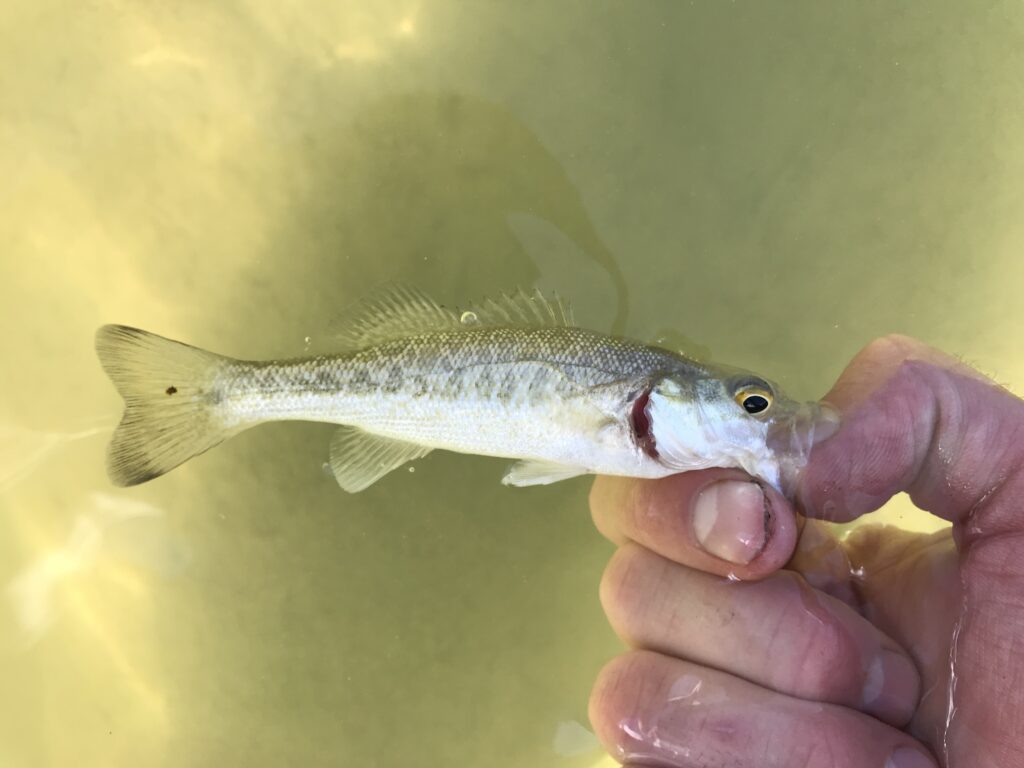
Species: Guadalupe River (Micropterus treculii)
Location: Guadalupe River Trib, Central Texas
Date: August 14, 2018
I caught tons of bass in Texas. I got some respectable Largemouths, what was (at the time) my largest Smallmouth, and a few Spots. Every time I landed a bass, I was not-so-secretly hoping it was a Guadalupe Bass, the Texas State Fish. Unfortunately, every time, I was disappointed.

Neither Largemouths nor Smallmouths are native to Texas. Spots are native to the easternmost portion of the state, but the other two are not. When the Guadalupe Bass was first described, shortly after the Civil War, it was considered a subspecies of Largemouth.
Half a century later, it was reclassified as a Spotted Bass subspecies.
It wasn’t until the 1950s when biologists discovered Guads living in the same waters as Spots that they realized something: these fish are different.
Official species status came shortly thereafter, but the State of Texas continued stocking invasive Largemouths and Smallmouths for nearly 30 years thereafter, a mistake in policy that would prove tragic. A combination of hybridization and outcompetition by the much larger Largemouths and Smallmouths put the Guadalupe Bass in dire straights.
By the time the fish was named the Texas State Fish in 1989, pure Guads were found in just a fraction of their original range. Strong efforts by the state to undo its decades of ill-advised stocking enabled the Guads to carve out a stronghold, but tragically, many rivers (such as the San Antonio River) had the genetics of their native fish compromised. One study found that more than 90% of bass in the San Antonio River had both Guadalupe and Largemouth genetics. As a result, the fish don’t really look like Largemouths but certainly aren’t proper Guads, either.

I caught tons of these hybrids while stationed in San Antonio, but it wasn’t until I drove a few hours from the city one night and targeted Gray Redhorse in a small trib of the Guadalupe River that I got a Guad that was at least mostly Guad. Local bios confirmed it was mostly Guad, but likely had a Largemouth parent two or three generations back. This explains the lighter coloration and the relatively narrow white edging on the caudal fin. That said, it still meets the 10-12 dark blotch meristic unique to Guads, the small mouth, the more streamlined body, and a few dark scales below the lateral line.
It’s definitely not a 100% pure Guad, though, so I’ll be sure to get one next time.
Please consider subscribing to my weekly column and access my past columns for as low as $1 per month by clicking “Become a Patron” below.
#SpeciesQuest // #CaughtOvgard
Read the next entry in #SpeciesQuest here: Species #188 — Mexican Tetra.


I appreciate, cause I found exactly what I was looking for. You have ended my 4 day long hunt! God Bless you man. Have a nice day. Bye
2rmmsh